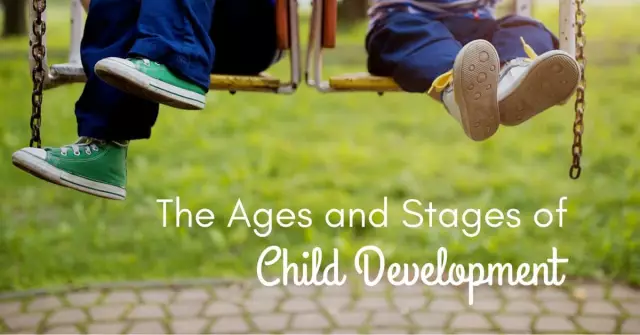- Author Rachel Wainwright [email protected].
- Public 2023-12-15 07:39.
- Last modified 2025-11-02 20:14.
Interiorization

The psychological term interiorization was coined by French scientists. The concept meant instilling ideology in the individual. That is, the transfer of social consciousness to the individual. In modern English-language dictionaries of psychological terms, internalization is replaced by internalization. For psychoanalysts, this is a mental process that means a relationship with a real or imaginary object, the transformation of an external factor into an internal one. The problem of interiorization in psychoanalysis remains controversial. Until now, it has not been clarified whether the processes of absorption, identification, introjection are identical, or they are carried out in parallel to each other.
In Russian psychology, the meaning of the word interiorization was given by Vygotsky as the concept of "rotation" - the transformation of external activity into the internal plane of consciousness. The development of the human psyche, according to Vygotsky's theory, is initially formed from the outside, depending on external social factors adopted in society. External collective forms of activity, through internalization, are embedded in the consciousness of a person and become individual.
Interiorization process
Higher mental functions develop at first as external forms of activity, and only in the process of internalization do they turn into mental processes of the individual. Research at the Vygotsky school made it possible to formulate the main fundamental provisions:
- The construction of mental functions is revealed only in the process of genesis, when they are formed, the structure becomes indistinguishable, goes deep;
- The formation of mental processes reveals the essence of a phenomenon that did not initially exist, but as a result of interiorization it was born;
- The emerging essence of the phenomenon cannot be explained by ordinary physiological processes and logical schemes, but is a process that does not stop even after the cessation of the action of one or another phenomenon.
Through internalization, the transformation of external signs into internal mental activity occurs. Such a process cannot take place on its own. Correct mental development of a child is possible only in terms of communication with people around him.
With the help of interiorization, a person learns to make mental plans, develop options. In other words, he gains the ability to think in abstract categories.
Interiorization of activities
Any concept is a product of activity, so it is impossible to teach it. However, it is possible to organize the learning process in such a way that the interiorization of the activity will occur in stages and progressively. The mental function in the initially material action, undergoing interiorization, becomes a part of the mental process. The mental plane is not an empty vessel that can be filled with something. The inner plane is an ongoing process in a state of formation. Each new mental action is based on the experience that is acquired through the interiorization of activity, and the transition "from outside to inside", according to Halperin, is the main mechanism for the formation of the mental plan. Halperin deduced the main parameters of the transformation of an action:
- Execution level;
- Generalization measure;
- Completeness of performed operations;
- A measure of mastering a skill.
Execution levels can vary in complexity, depending on the tasks. The execution of a task can occur at three sublevels. These are the following actions:
- With material objects;
- With the help of speech, both oral and written;
- In the mind.
The highest level of interiorization of activity lies in the ability to perform certain actions “in the mind” without using additional tools: a book, a calculator, and so on.
Stages of development of mental activity
The formation of mental actions, according to Halperin's concept, goes through the following stages:
- Building a scheme for future action. Familiarization with the materials and requirements for the final result;
- Practical development when using material objects;
- Mastering a given action without relying on material objects, that is, the process of interiorization, as a result of which the visual action is transferred to the inner plan. At this stage, external speech replaces specific objects;
- Complete transfer of external speech action into mental activity. A person performs a task thinking “to himself”;
- The final stage of interiorization means activity “only in the mind”.
The child goes through all these stages sequentially, developing thinking.
Social interiorization

In Russian psychology, interiorization means the process of transforming interpersonal relationships into relationships with oneself. The acceptance, processing and storage of sign information "inside" the psyche, based on memory, does not belong to the phenomenon of social interiorization. In the development of human higher nervous activity, the following stages are distinguished:
- An adult acts on a child with a word, prompting one or another activity;
- The child learns a new type of address for him and begins to influence the adult by word;
- The child acts on himself with a word.
All people, without exception, go through the stages of social interiorization. The child is accustomed to mental activity without the use of specific objects.
In the theory of activity, internalization is the transfer of certain external actions into the internal, mental plane. External activities as a result of internalization undergo some changes, especially in the operational part.
Psychoanalysis explains the processes of influence of interindividual relations, the formation of the structure of the unconscious: individual and collective, which determines the structure of consciousness.
Found a mistake in the text? Select it and press Ctrl + Enter.






